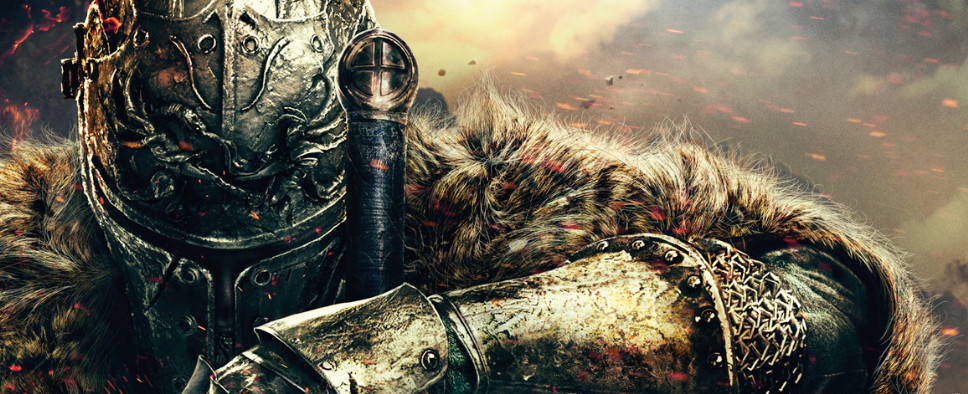Dark Souls II Review
-
Category: ReviewsHits: 12932

Article Index
Introduction
Dark Souls II is, if the II at the end of the title isn't enough of a giveaway, the sequel to From Software's 2011 action-RPG. And while IP technicalities make it so that they're separate series, there's no doubt that Dark Souls and its sequel themselves are the successors to the studio's PS3 exclusive Demon's Souls, the title that introduced most of the series' core mechanics, from its action-based stat-driven combat to the oft-discussed and undoubtedly fascinating multiplayer mechanics.
Considering how beloved both of its predecessors are, I don't doubt the Dark Souls II team felt pressured by fans' expectations while working on the game. What I can say for sure is that the title feels more conservative than its predecessors, if only ever so slightly, and seems more content to refine and tweak rather than make structural changes. That's not necessary a sin on From Software's part, provided they managed to keep the quality consistent with their previous outings. But did they?
Before delving into the review proper, I would also like to apologize for taking such a long time writing it. Yes, the game is large in size, but the truth is that I had a difficult time putting together a piece that felt coherent while being true to my thoughts and impressions. Hopefully the final result is worth the wait, but you'll be the judge of that.
What is Dark Souls II?
To put it simply, Dark Souls II is an action-RPG that puts you in the shoes of an Undead, a creature that doesn't die but revives near bonfires that act as checkpoints, and needs souls to avoid becoming a mindless zombie or "Hollow". The plot is extremely vague and obfuscated, and the similarly vague directions you're given serve as an excuse to see your character explore one environment after another, killing enemies, dealing with traps, and occasionally chatting with a friendly NPC along the way. Dark Souls II presents what is essentially an action version of the classic dungeon crawling gameplay loop, but stripped to the basics and mixed with foreign, often novel elements. With the exception of Majula, the game's main hub, which offers a brief respite and the chance to spend your souls (both the game's main currency and experience points) to level up and buy new equipment and items, the entire game world is essentially one big dungeon.
Combat in the Souls series is made of simple elements that come together coherently to form a deep but easy-to-learn system. Every weapon, shield or spell catalyst offers two primary actions. Weapons generally have two types of attacks, usually a weaker one and a more powerful one that leaves more openings to your enemies. All shields can be used to block, but some can also be used to "parry" an enemy, leaving it open to a devastating riposte, while others are too heavy to serve that function, but can crush with a slam attack. Most spell catalysts can be used either to cast a spell or to attack. And there's a lot more I'm not covering like ranged weapons, the ability to hold a weapon two-handed to get a new, tweaked moveset and more damage out of the attacks, or dual-wielding (a new addition to the series). Knowing all the quirks of your equipment, in addition to its stats, is one of the most important requirements to succeed in the game, but hardly the only one. Managing your Stamina is equally important, as it's an incredibly important resource, required to perform all but the simplest of feats. Spam attacks or roll too much, and you'll find yourself in an extremely vulnerable position, one that monsters or even enemy players will be quick to exploit. And if I had to identify a third piece of the puzzle, it'd be observation and memorization. So many players get discouraged by the game's difficulty but seem to be unwilling to learn from their mistakes. While the difficulty balance is certainly not perfect, the game is almost always fair in terms of challenge: traps and ambushes can be be spotted ahead of time, enemy patterns are telegraphed, all the elements you need to keep track of are available at a glance, and there are always at least a few options to deal with a threat for every build.
But yes, you'll die. Over and over, as the game is keen to tell you from the very beginning. Much has been said about the Souls' games "soul-crushing" difficulty, but the truth is that the barrier is mostly psychological. Death is, first and foremost, a learning tool, and an integral part of the game mechanics. Every time you die you leave a bloodstain that contains all the souls you were carrying on the spot where you died (or close to it, in case you died by falling or some similar circumstance where the bloodstain would be out of your reach). Touching the bloodstain will give you back all the souls you lost, but you only have one chance to do it: dying again erases it, and the souls are lost forever. But there are always more opportunities to gain more souls, and perhaps the knowledge on a boss' moveset or elemental weakness you obtained that way was worth the loss. Dying also turns your character from Human to Hollow, a change that concerns both appearances and mechanics. More and more deaths will make the character look progressively more zombie-like in appearance, and also progressively reduce Health until it's down to about 50% of its normal value. On top of that, Hollow form also removes the ability to summon friendly players or NPCs to help, making it an altogether worse way to play the game. Just like with any other of the game's challenges, Dark Souls II gives you a way out: use a Human Effigy and your character will revert back to Human form.


